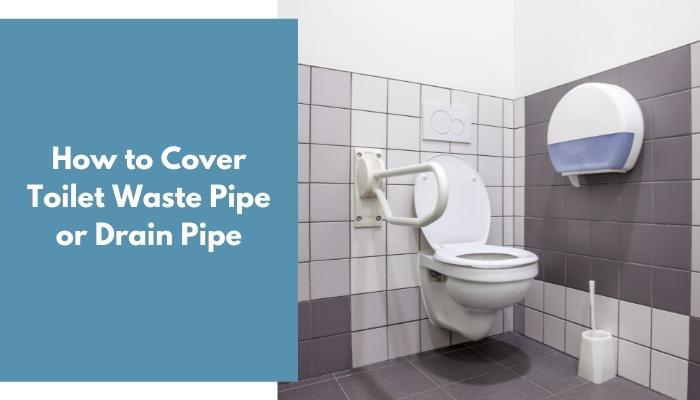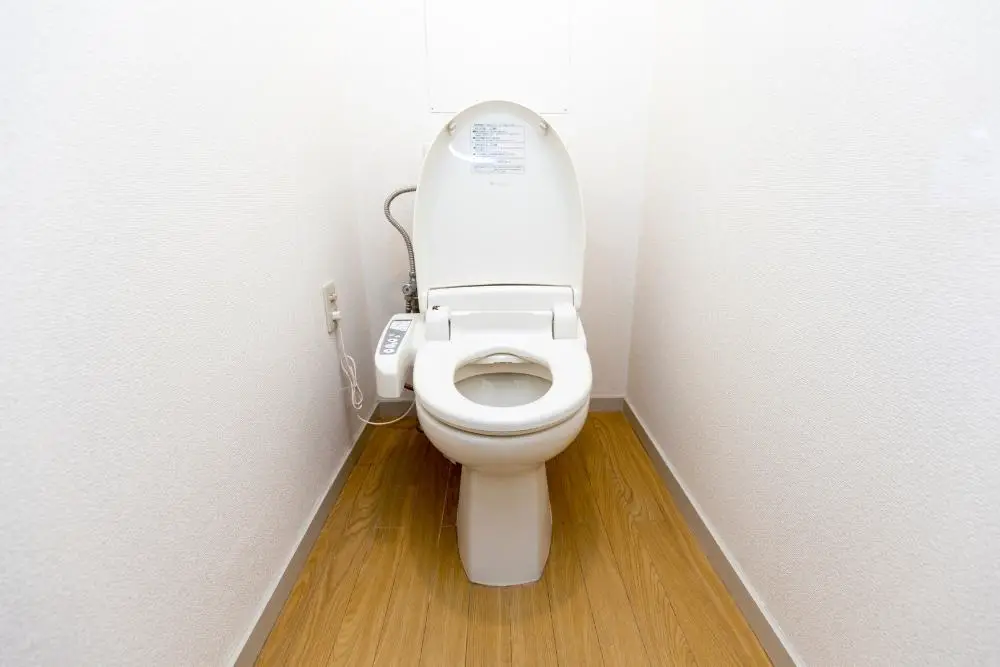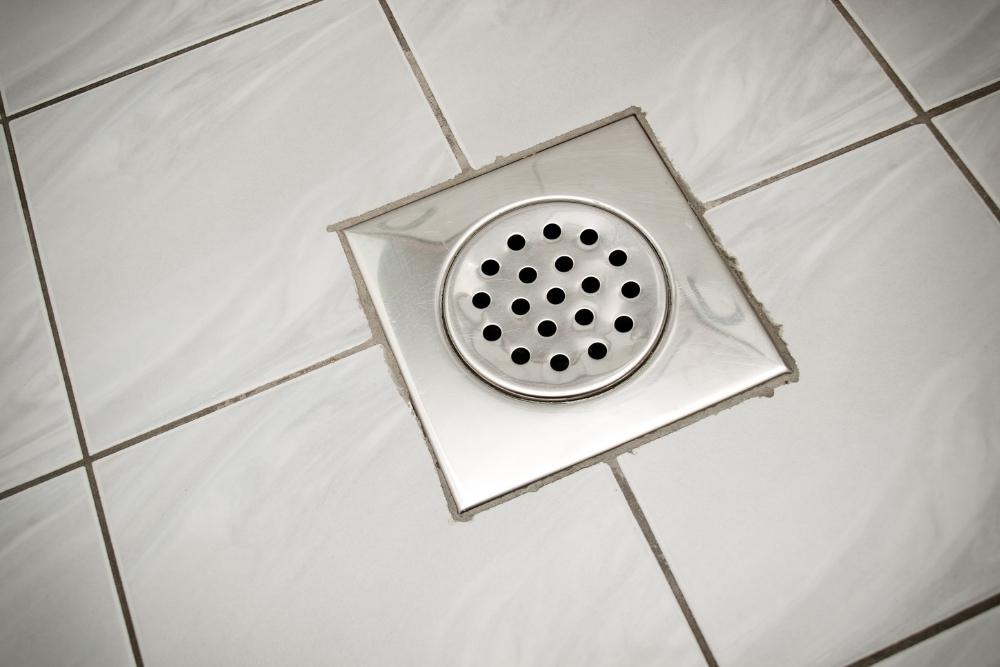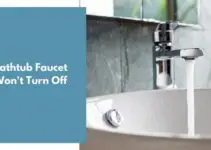Sewer gases are dangerous to your health, and they can also cause accidents and damage your property. You should also check and clean your drain regularly to prevent further issues.
To cover toilet waste pipe or drainpipe, you can plug any of the following: pressure plugs, inflatable test balls, screw caps, twist plugs, thick rag, and slice valves.
This article will uncover the basic methods of covering toilet waste pipes and some essential tips you need to remember.
Contents
6 Ways to Cover a Toilet Waste Pipe
Before restructuring the bathroom completely with the help of professionals, it would be better to block the drainpipe first to prevent the toxic sewage smell from pestering your home.
Pressure Plugs
Most people prefer to use a pressure plug instead of a conventional one. These are small conical plugs that you can buy from the hardware store.
The tool is direct to use and performs on very basic principles. It allows you to wedge a plug into a floor drain. To start, turn off the water supply to the toilet. Then, remove the toilet bowl altogether.
Make sure that you altogether remove the toilet’s outer surface. Doing so will remove any excess wax and prevent the pressure plug from getting stuck.
Before you start, make sure that the size of the drain is the same as the height of the toilet. It should be about three inches wide. Take a couple of quick measurements to find the right pressure drain for your toilet. It’s straightforward to install and doesn’t require much effort.
Once the drain is ready, pop it into place. Then, gently nudge it with a rubber mallet to force it deeper into the pipe.
Don’t push the plug too hard to create a tight seal. Doing so will only damage the drain. If you plan on keeping the pin in place for a long time, you might need to add additional bracing.
Over time, the pressure inside the drain can build up and cause it to shoot off the floor drain. Use plywood and lumber boards to support the drain against the ceiling to prevent this.
Inflatable Test Balls
One of the most common tools plumbing and construction professionals uses is the inflatable test ball. This type of device is famous for testing the integrity of a sewer line.
You can use this product to prevent gases from pestering your home. Or to prevent backflow caused by flooding. You can also use it to protect the drains in your home by inserting them into the sewer clean-out fitting.
The test ball features an inflatable rubber balloon that inflates and seals the drain, unlike standard pressure plugs. An air compressor powers this component.
Screw Caps
Consider utilizing a pin cap for a solution that will last for a long time. Contractors use lids to shield the plumbing before lodging fixtures.
Screw caps function on almost any type of tube. Finding a suitable cap is not difficult whether you have standard PVC or copper drains. But, your bathroom drain pipe will require a threaded outlet.
Not all drains will have proper threads. If they do, it’s likely beneath the toilet flange. Removing the toilet flange should provide access to the raw pipe threads.
Once you extract the flange, you can tighten the cap to create a permanent plug. Before you do that, apply some Teflon tape or Pipe Dope. It ensures that the plug is completely airtight.
Twist Plugs
Twist plugs are a modern alternative to traditional pressure and screw caps for securing the drain. They are supposed to go on top of the drain to access the hole quickly.
These are self-sealing plugs. They can be made with various materials, such as wingnuts or large screws. When fully tightened, the plug produces a tight seal that stays in place.
Thick Rag
It is a temporary solution to protect you from sewer fumes while replacing an old toilet. The thick rug will last for a couple of hours. This method is straightforward and will prevent objects from getting stuck in the drain. You need to size the rag to the exact size of the gutter.
Slice Valves
A slice valve is a sewer gate commonly used for draining hot tubs and pools. It’s also widely used by professional pool maintenance and plumbers.
The emergency stop is a fail-stop that prevents the flow of gases and liquids from happening. You can use it in the event of an emergency. Most slice valves are made out of plastic. However, heavy-duty metal ones are also available.
It is why it’s essential to call a professional to install them.
Why Do You Need to Plug Drains?
Preparing for flooding and heavy rain is essential for homes in areas prone to experiencing these conditions. There are various ways that sewage can enter a home. It can flow back into the house through a sewer line or a treatment plant.
Getting in touch with the local officials is also essential to prevent a sewer system from getting damaged by heavy rain and flooding.
To prevent the spread of pathogens and build-up of bacteria, homeowners should seal the areas where the sewer can enter their homes. It can help minimize the damage caused by the potentially harmful effects of the substances.
How to Block a Drain Without a Plug
Use an empty coffee pod or a small plastic medicine cup to block a bathtub drain. Make sure that it’s the right size to fit in the gutter. Follow the steps below to thoroughly inspect the plastic container to see if it can adequately seal the drain.
If the coffee pod doesn’t work correctly, try a big enough lid to cover the drain hole. It will help keep the top in place and prevent water from getting into the bottom of the tub.
Use a small sponge or a wet washcloth to create a drain plug in a plastic bag. Tuck the sponge or cloth tightly into the bag and squeeze as much air. To create a watertight seal, place the bag over the drain. Or, use a plastic bag with a lid to secure it.
Frequently Asked Questions
How Do You Seal a Toilet Drain?
You can seal a toilet drain using wax or a rubber seal. Either of these will ensure that no toxic gases will negatively affect you and your family. A properly sealed toilet drain prevents harmful gases from entering your home. To do so, remove the old wax seal and the drainage hole’s flange.
Can You Leave Toilet Hole Open?
You cannot leave a toilet hole open because of the harmful gases it produces. The gases emitted by open toilet drain pipes can be detrimental to people with breathing problems and children. They should be plugged in or covered immediately to minimize their effects.
Are Toilet Gases Harmful?
Toilet gases are harmful and very toxic when absorbed by your body. It can cause many health complications that, when untreated, can lead to more severe symptoms. Hydrogen sulfide poisoning is a severe illness caused by exposure to low levels of this toxic substance. It can cause discomfort in the eyes and respiratory tract.
Is Sewer Smell Toxic?
Sewer smell is toxic and should not be inhaled by everyone, especially kids and elders. The gas from a sewer system comprises various gases, such as ammonia and hydrogen sulfide. These two components contribute to the smell of sewer gas.
In addition, some of the components of sewer gas comprise methane, sulfur dioxide, and nitrogen oxides.
How Do You Get Rid of Sewer Gas Smell in Toilet?
To get rid of the unpleasant odor in your bathroom, you will need to unclog the drain. Mix baking soda, water, and vinegar, then pour the connection down the drain. If a toilet smells like sewage after it’s flushed, sewer gases built up in the pipes caused it.
You can also use a chemical drain cleaner to ensure that you will dissolve all the bacteria build-up in your pipes.
Conclusion
In covering a toilet waste pipe or drain pipe, you can try different kinds of methods, namely: installing pressure plugs, putting inflatable test balls, placing screw caps or twist pins, stuffing thick rags, or lodging slice valves.
It would be best to remember that this task is tricky to do. There will be times when you will need assistance, especially when things don’t go your way. That’s why you need to hire a professional plumber to help you address the issue to avoid further pipe damages.







